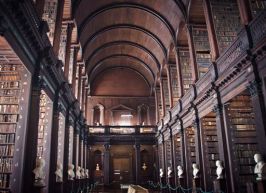
Beowulf
- Epic
- Old English
What It’s About
An Enigmatic Epic
Beowulf is one of the most controversial works of English literature. This isn’t surprising given that it only exists as a single manuscript that has suffered significant physical damage over the centuries. While other Anglo-Saxon literature survives, Beowulf is unique in its scale and subject matter. As such, it stands out as an almost lone exemplar of the culture that created it. For modern scholars and readers, it is a vivid epic that hints at the ideas, aspirations and imaginative world of Anglo-Saxons before the Norman Conquest. At the same time, it is puzzling why its author (or authors) used such a distinctive mix of Anglo-Saxon dialects to tell what appears to be a Norse tale from unknown Scandinavian sources. The text offers rich details, but definitive answers seem just out of reach. Diligent scholarly research uncovers more and more information but never a clear result. Beowulf offers a brilliant view of an earlier world – but one that seems to transform subtly with each change of the light.
Summary
About the Author
Little to nothing is known about the anonymous author or authors of Beowulf. It most likely came into existence around 700 AD, though there is only one manuscript, which dates back to about 1000 AD. The text is supposed to have passed through the hands of several scribes. However, some hold the opinion that it is based on one independent interpretation of many tales passed down through oral traditions. If that were the case, Beowulf would have but one author after all, and there is much to indicate that he was a distinguished man with a humanistic education, possibly a monk living in an English monastery. There is also evidence suggesting that he lived in Mercia, one of the original seven Anglo-Saxon kingdoms. In any event, he was familiar with Scandinavian customs and traditions, he knew Germanic myths, and he apparently took influence from Virgil’s Aeneid, which in eighth-century England was the most widely read secular book. The linking of archaic-pagan elements with references to Christianity is striking. It seems that the author – or possibly a later editor – tried to combine pagan mythology with Old Testament traditions. After all, the initial plot was a pagan epic that was retrospectively injected with a Christian ethic.











Comment on this summary or Diskussion beginnen